The Ultimate Guide to Fijian Food, As Explained By Fiji’s Jamie Oliver
PUBLISHED June 19th, 2018 06:00 am | UPDATED March 26th, 2019 12:53 pm
It’s just past noon as I sit down for lunch at Malamala Beach Club, situated on the privately-owned Mala Mala island in Fiji. It takes nearly half an hour to get here by ferry from the gateway city of Nadi, but with crystal clear waters, white sand beaches, and quality snorkelling, who’s complaining?
This tiny island (seriously, you can circle around in nine minutes) is where Lance Seeto, the man credited with igniting a cultural food revolution across Fiji, is now based. His achievements are far and varied: he once served as Honorary Culinary Advisor to the Fiji Olympic team as well as Culinary Ambassador for Fiji Airways. You might also recognise him from the South Pacific’s top-rating adventure cooking show ‘Taste of Paradise’. And the funny thing is? He was born in Papua New Guinea, raised in Melbourne, and only took up Fijian citizenship in 2016. Still, forget culinary purity – the man dubbed as the Jamie Oliver of Fiji has a deep-seated love for the local cuisine, something he was more than happy to talk about.
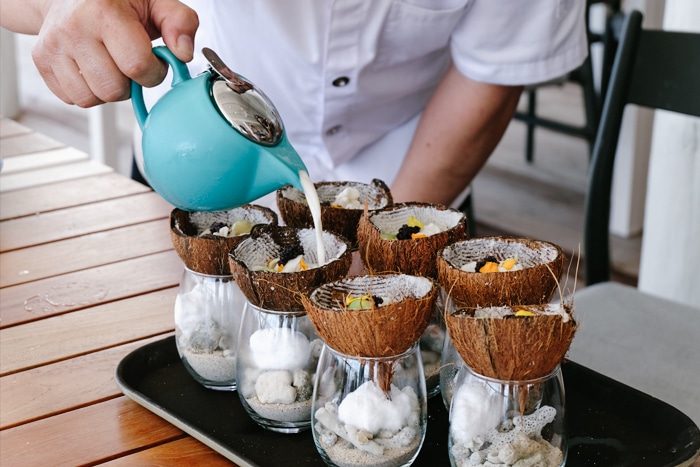
The background
Some three thousand years ago, the South Pacific archipelago was first discovered by the Polynesians who took up land in Samoa, Hawaii, Tonga, Easter Island, and the like. Back then, Fiji was then known as the Cannibal Isles, as competing tribes and villages would eat each other for strength after battle. Luckily, the practice was eventually stopped when most of the country converted to Christianity during the mid-1800s, or you’d be reading about human pies.
Lance describes Fiji as a place blessed by a sunny tropical climate, fresh mountain waters (yes, Fiji Water is actually from Fiji), and an abundance of local ingredients. In short, it’s a treasure trove of new tastes for adventurous foodies. But it was only recently that the food scene saw a bit of a revival, thanks in no small part to the chef’s efforts. “The revolution was born out of tourism. Years ago, people would come and say [the food] is pretty average”, he says. “A few years ago, if there’s a family function or potluck, someone would bring stir-fry or a curry. Now, people are bringing more modern dishes made from recipes online.”
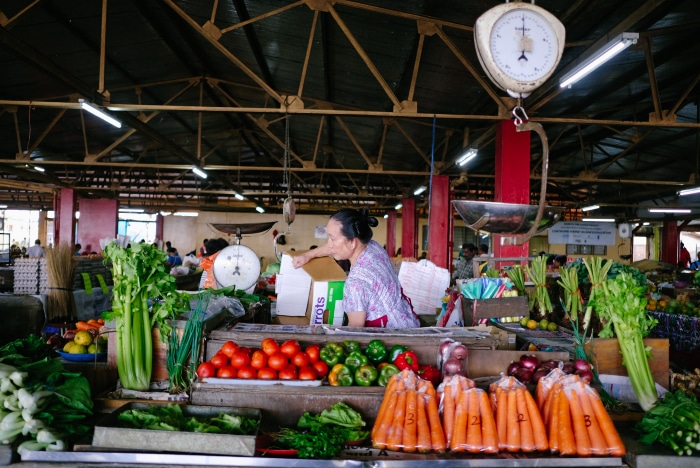
“They’ve never seen someone go on TV and say ‘this is your local food, but I’ll show you another way to do it. You add this and you put that.’”
His cooking is not easy to define. It’s a type of cooking that can be categorised as fusion-Fijian, and in the context of his roots, just a pinch of modern Australian. What Lance does is elevate the local dishes, asking people to come to the resorts to try it. At Malamala Beach Club, he has a salt and pepper octopus dish with five spiced salt, sautéed chilli and garlic, and seaweed ponzu, and its taste is out of this world.
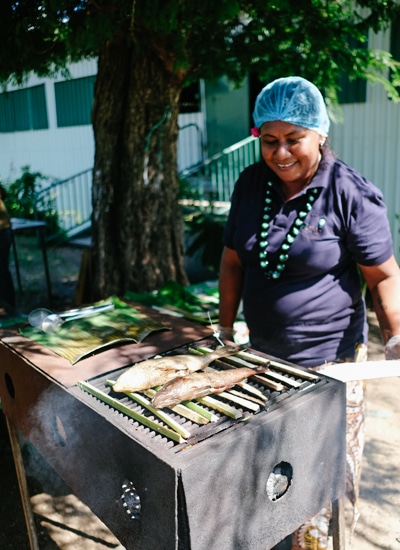
Essential ingredients & dishes
As a nation of islands, the main form of protein in Fiji is seafood. Spanish mackerel and mahi-mahi (dolphin fish) are the most common, while longnose emperor, snappers, and tuna come and go across the seasons. Fishes like cod and salmon and more expensive and premium. “You char them on a hot grill, splash some salt water with bush lemon and chillies, and you eat it”. The briny citrus dressing, I later learn, is called wai toni toni.
But the most standout method of preparing fish in Fiji is the quintessential kakoda (pronounced “ka-kon-da”), a ceviche-like dish that goes one step further with freshly-squeezed coconut milk. It’s traditionally a mild dish that was created to preserve their catch – citrus (kumquats are in season at the moment) cures the fish nice and slow, and brings out its natural sweetness. What makes Lance’s version different is his use of lobster rather than shrimp, and avocado and caviar kick the flavours up a notch.
“McDonald’s is a treat here. Everything else is fresh, and eating out is a treat.”
He also tells me about the rare coconut crab, a massive alien-like crab with yellowish flesh that only eats coconuts. The locals boil the delicacy on its own, and all the ‘sauce’ it needs are the rich oils from the stomach. Needless to say, it tastes like coconut. As for meat, they’re eaten to a certain extent. “Traditionally, Fijians are pescatarians. Later, poultry was introduced by the European, and the Australians brought beef. Goats are especially special and are eaten in weddings. They’d chop it up and make curry – all wild goats, not farmed.”
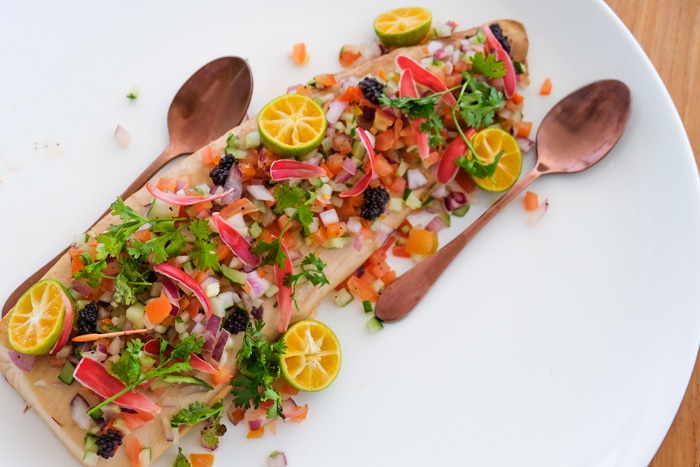
Lunch in the villages typically consists of steamed or fried taro (they even have a holiday dedicated to the potato-like root) with fish, cassava, plantains, and leafy vegetables. Taro leaves are boiled and sautéed with onion and garlic into a mushy consistency known as rourou, and it’s perfect on steamed rice. For dinner, you might see colourful stews, soups, or curries made with meat or fish and potatoes.
Indo-Fijian fare
On average, 50 percent of the Fijian population are indigenous (or ‘iTaukei‘), 45 percent are Indians, and the remainder Chinese, British, Australians, or others. This means that the local cooking is culturally steeped in not just native but also Indian flavours. Fresh curries, dal, roti, and chutneys are popular and easy to find in Suva, the capital and largest metropolitan city in Fiji, but you might notice they aren’t as piquant or hot as their homeland counterparts. As Lance explains, “They never took any of their spices with them. The first ship of Indians that arrived had no chilli and no ginger, so they had to adapt a lot of their recipes with what is available here. It was about simplicity.”
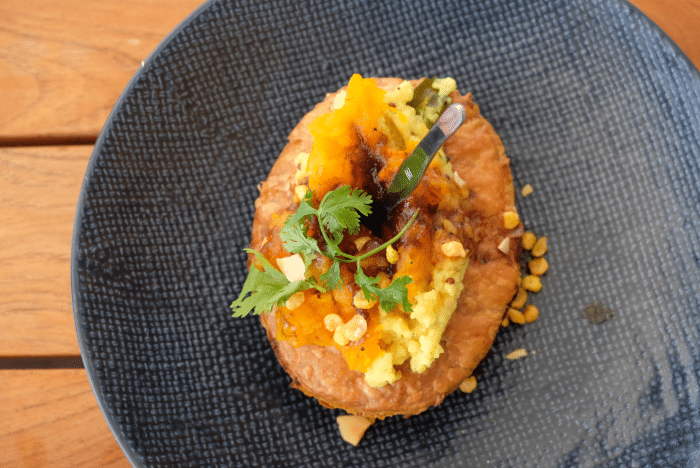
“What I love about the diet here is that it’s so pure and simple. It’s how they live, and how they eat.”
Lovo & kava
You cannot leave the country without trying lovo, which are often associated with large feasts of sharing, kava drinking, and renowned Fijian hospitality. Similar to the hangi of the Maori people, it involves digging a hole in the ground to create an earth oven of sorts, filling it with layers of banana leaves, heated stones, and fire to cook anything from whole chickens and pork to root vegetables like cassava and taro. Typically, every house in Fiji has some form of lovo pit. Simply cover with dirt and slow-cooked for a couple of hours, what comes out is a smokey banquet that’s like nothing else.
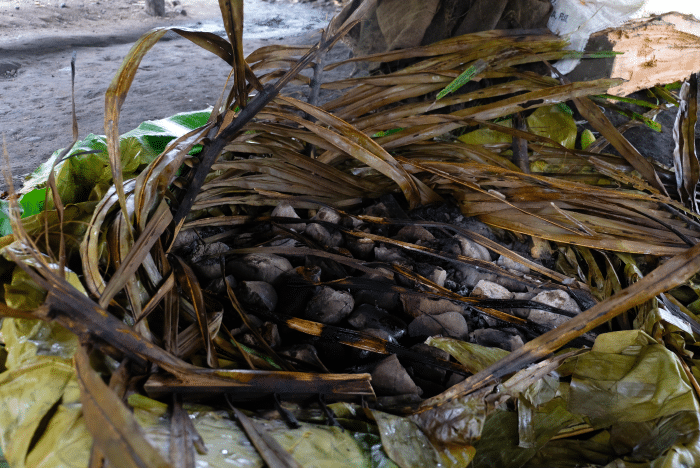
While waiting, indulge in a bowl or two of kava, a mildly narcotic drink made by crushing the root of the pepper shrub and mixing with water. Think of it as the national social drink of Fiji or as Lance puts it, liquid valium. “That’s why the Fijians are so happy. It’s an acquired taste. It tastes like mud at first, and as you drink more, your mouth gets numb and your body gets numb.” And no, it’s not alcoholic and totally legal.

